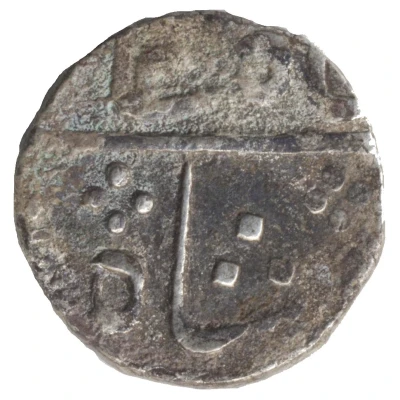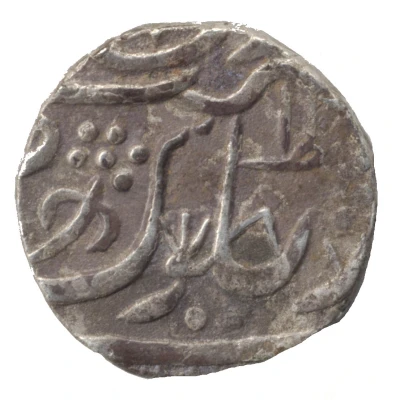![1 Rupee - Shah Alam II [Daulat Rao] (Sipri) 1106-1130 (1695-1718) front](/storage/images/1-Rupee-Shah-Alam-II-Daulat-Rao-Sipri_140649_1.webp)
![1 Rupee - Shah Alam II [Daulat Rao] (Sipri) 1106-1130 (1695-1718) back](/storage/images/1-Rupee-Shah-Alam-II-Daulat-Rao-Sipri_140649_2.webp)
![1 Rupee - Shah Alam II [Daulat Rao] (Sipri) 1106-1130 (1695-1718) photo](/storage/images/1-Rupee-Shah-Alam-II-Daulat-Rao-Sipri_140649_1.webp)
© Parimal (CC BY-NC-SA)
1 Rupee - Shah Alam II [Daulat Rao] Sipri
| Silver | 11.00 g | 21.10 mm |
| Issuer | Princely state of Gwalior (Indian princely states) |
|---|---|
| Maharaja | Daulat Rao Scindia (1794-1827) |
| Type | Standard circulation coin |
| Years | 1106-1130 (1695-1718) |
| Calendar | Islamic (Hijri) |
| Value | 1 Rupee |
| Currency | Rupee |
| Composition | Silver |
| Weight | 11.00 g |
| Diameter | 21.10 mm |
| Shape | Round |
| Demonetized | Yes |
| Updated | 2024-10-05 |
| Numista | N#140649 |
|---|---|
| Rarity index | 90% |
Reverse
Pseudo mint name : Narwar
Regnal year
Comment
Ruler: Daulat RaoNarwar fort was taken in AD1789 by Sindhia and the Raja forced to pay tribute. This event may have induced the Raja of Sipri to strike his own coin, although recognising his alliance to the Narwar Raja by retaining the name of his mint. The contemporary coins of Narwar show a lotus bud and as it is unlikely that both coin types were struck in one and the same mint, the coins without the lotus bud are assigned to Sipri.
It is presumed to be a coin of Sipri, struck by the local Raja as feudatory to Narwar. As Narwar in AD1789 had become a tributary to Sindhias , the Sipri coins can, indirectly, be attributed to the Sindhias as well.
In RY#47 of Shah Alam II i.e AD1804/05, the Raja of Sipri submitted to Daulat Roa Sindhia and the coins struck after that date are clearly Sindhia issues.
Interesting fact
One interesting fact about this coin is that it was issued during the reign of Shah Alam II, who was the Mughal Emperor at the time, and it features an inscription in Persian that reads "Daulat Rao" which means "King of Power" or "King of Wealth". This suggests that the coin was intended to symbolize the power and wealth of the Mughal Empire during Shah Alam II's reign.
![½ Rupee - Shah Alam II [Madho Rao] ND front](/storage/images/-Rupee-Shah-Alam-II-Madho-Rao_50683_1.webp)
![½ Rupee - Shah Alam II [Madho Rao] ND back](/storage/images/-Rupee-Shah-Alam-II-Madho-Rao_50683_2.webp)

